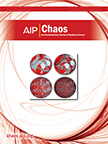
CHAOS
Scope & Guideline
Charting New Territories in Nonlinear Dynamics
Introduction
Aims and Scopes
- Chaos Theory and Nonlinear Dynamics:
The journal extensively covers chaos theory, addressing both its mathematical foundations and practical applications in various fields such as physics, biology, and engineering. - Complex Systems and Networks:
Research on complex systems and networks is a significant focus area, including topics like synchronization, robustness, and dynamics of interconnected networks. - Stochastic Processes and Modeling:
Papers exploring stochastic dynamics, including noise influences and random processes, are prevalent, highlighting the effects of uncertainty on chaotic systems. - Epidemiological Modeling:
The journal features studies on dynamical models related to infectious diseases, particularly in the context of COVID-19, emphasizing the interplay between dynamics and public health. - Biological and Physical Systems:
Research focusing on the dynamics of biological systems, such as neural networks and ecological models, is frequently featured, showcasing the application of chaos theory in understanding complex biological phenomena. - Data-Driven Approaches and Machine Learning:
The integration of machine learning techniques with dynamical systems analysis is increasingly relevant, with contributions on data-driven modeling and prediction in chaotic systems.
Trending and Emerging
- Machine Learning and AI Applications:
The use of machine learning and AI techniques to analyze chaotic systems and improve predictive capabilities is rapidly increasing, signaling a trend towards data-driven methodologies. - Complex Network Dynamics:
Research on the dynamics of complex networks, including emergent behaviors and synchronization phenomena, is gaining prominence, particularly in relation to social networks and biological systems. - Epidemic Modeling and Public Health Dynamics:
The ongoing relevance of pandemic-related research has led to a rise in studies focusing on modeling disease spread and intervention strategies within complex networks. - Interdisciplinary Approaches:
There is a growing trend towards interdisciplinary research that combines insights from physics, biology, engineering, and social sciences, reflecting the complex nature of real-world problems. - Stochastic Dynamics and Noise Influences:
Research focusing on the effects of noise and stochastic processes on dynamical systems is becoming increasingly important, especially in the context of robustness and resilience analysis.
Declining or Waning
- Traditional Linear Dynamics:
Research focusing solely on linear dynamics and its applications has seen a decrease, as the field increasingly recognizes the importance of nonlinear phenomena. - Static Models:
There is a noticeable reduction in studies employing static models without considering dynamic interactions or temporal evolution, as the complexity of real-world systems demands more dynamic approaches. - Single-Disciplinary Focus:
Papers concentrating solely on a single discipline, without interdisciplinary integration, are less frequent, reflecting the journal's trend towards more integrative and interdisciplinary research. - Classical Control Theory:
Research solely based on classical control theory has diminished as newer, more adaptive control strategies that incorporate chaos theory and complex dynamics gain traction.
Similar Journals

Izvestiya Vysshikh Uchebnykh Zavedeniy-Prikladnaya Nelineynaya Dinamika
Pioneering Research in Nonlinear DynamicsIzvestiya Vysshikh Uchebnykh Zavedeniy-Prikladnaya Nelineynaya Dinamika, published by Saratov State University, is a distinguished open-access journal that has been contributing to the fields of Applied Mathematics and Physics since its inception in 2005. With an ISSN of 0869-6632 and E-ISSN 2542-1905, this journal fosters the dissemination of innovative research in nonlinear dynamics and statistical physics. Recognized within the academic community, it holds a Q3 ranking in the categories of Applied Mathematics, Physics and Astronomy (miscellaneous), and Statistical and Nonlinear Physics as of 2023. Despite facing competitive environment challenges, with Scopus ranks positioning it in the lower percentiles, the journal remains an important platform for scholars aiming to share insightful findings and theoretical advancements with a global audience. Based in the Russian Federation, it transitioned to an open-access model in 2020, enhancing accessibility and ensuring that cutting-edge research reaches those who can benefit from it most. The journal aspires to continue its trajectory of fostering high-quality scholarship through rigorous peer review and collaboration across disciplines.
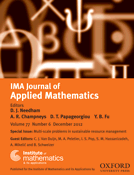
IMA JOURNAL OF APPLIED MATHEMATICS
Empowering Researchers with Rigorous Mathematical InsightsThe IMA Journal of Applied Mathematics, published by Oxford University Press, serves as a pivotal platform for disseminating innovative research in the field of applied mathematics. With its ISSN 0272-4960 and E-ISSN 1464-3634, the journal has established itself as an essential resource for academics and practitioners, showing notable engagement with both theoretical and practical aspects of mathematics. Spanning over five decades since its inception in 1965, the journal covers a broad range of topics aimed at addressing complex real-world problems through mathematical modeling and computational techniques. Holding a Q3 quartile ranking in the applied mathematics category for 2023, and a Scopus rank of #310 out of 635, it plays a significant role in contributing to the academic discourse within this dynamic field. Despite not being open access, the journal's robust reputation and commitment to rigorous peer review ensure that cutting-edge research remains accessible to its audience of researchers, professionals, and students dedicated to advancing mathematical sciences. Its ongoing commitment to exceptional scholarship makes the IMA Journal of Applied Mathematics a vital resource for those seeking to explore and apply mathematical principles in various contexts.
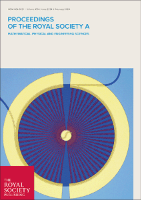
PROCEEDINGS OF THE ROYAL SOCIETY A-MATHEMATICAL PHYSICAL AND ENGINEERING SCIENCES
Championing Quality Research in the Heart of Scientific Inquiry.PROCEEDINGS OF THE ROYAL SOCIETY A-MATHEMATICAL PHYSICAL AND ENGINEERING SCIENCES is a prestigious academic journal published by the Royal Society in the United Kingdom, dedicated to the dissemination of high-quality research in the fields of Mathematics, Engineering, and Physics. With an esteemed impact factor and ranked in the top quartiles (Q1) across various categories, this journal stands out as a leading source of innovative findings and critical discussions within the global scientific community. Researchers benefit from its comprehensive coverage that spans from theoretical explorations to practical applications, and the journal plays a crucial role in advancing knowledge and fostering interdisciplinary collaboration. Although it does not currently offer Open Access options, its influence is underscored by notable Scopus rankings, evidencing its significant contribution to the fields it represents. Located at 6-9 Carlton House Terrace, London SW1Y 5AG, England, the journal continues to be a cornerstone for scholars seeking to publish impactful research and stay informed on the latest advancements in science and engineering.
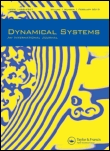
DYNAMICAL SYSTEMS-AN INTERNATIONAL JOURNAL
Bridging Disciplines through Dynamic ResearchDynamical Systems - An International Journal, published by Taylor & Francis Ltd, serves as a vital resource in the fields of mathematics and computer science applications. With an ISSN of 1468-9367 and E-ISSN 1468-9375, this journal has established a significant presence since its inception in 1996 and continues to contribute valuable insights through 2024. Although it holds a Q3 ranking in both Computer Science Applications and Mathematics (miscellaneous), it is a platform for disseminating innovative research and applications relating to dynamical systems analysis and theory. Despite recent challenges reflected in its Scopus rankings, with percentiles at the 30th and 10th for general mathematics and computer science applications respectively, the journal remains committed to fostering interdisciplinary perspectives and providing a forum for the exchange of ideas among academics, professionals, and students. Open access options ensure that research findings reach a broader audience, enhancing the journal's impact and relevance in a rapidly evolving field.

PHYSICA D-NONLINEAR PHENOMENA
Connecting Researchers to the Heart of Nonlinear PhysicsPHYSICA D-NONLINEAR PHENOMENA, published by Elsevier, serves as a leading academic journal at the forefront of the fields of Applied Mathematics, Condensed Matter Physics, Mathematical Physics, and Statistical and Nonlinear Physics. With an impressive track record since its inception in 1980, this journal has maintained a distinguished presence, noted for its Q1 ranking in multiple categories in 2023, showcasing its impact and relevance in the scientific community. The journal's commitment to advancing knowledge is reflected not only in its rigorous peer-reviewed articles but also through its high visibility and accessibility, aiding researchers, professionals, and students in staying abreast of the latest developments in nonlinear phenomena. Located in Amsterdam, Netherlands, PHYSICA D-NONLINEAR PHENOMENA is essential for those seeking to explore innovative research and contribute to groundbreaking discoveries in the realm of nonlinear dynamics.

JOURNAL OF DYNAMICAL AND CONTROL SYSTEMS
Advancing the Frontiers of Control Theory and Dynamical SystemsJOURNAL OF DYNAMICAL AND CONTROL SYSTEMS is a premier interdisciplinary journal published by Springer/Plenum Publishers, recognized for its significant contributions to the fields of dynamical systems, control theory, and numerical analysis. With an ISSN of 1079-2724 and an E-ISSN of 1573-8698, the journal serves as an important platform for researchers and professionals to share their findings and innovative methodologies. Covering topics from algebra and number theory to control and optimization, it holds a respectable position in the 2023 Q2 quartile rankings across various categories, reflecting its impact and quality within the academic community. The journal’s scope is expansive, aiming to foster advancements and insights that are instrumental for academics and industry experts alike. With a convergence period from 1995 to 2024, the journal continues to be a vital resource for students, researchers, and professionals seeking to navigate the complexities of control systems and their dynamic interactions. For those looking to contribute to the ongoing discourse in these critical areas of study, the JOURNAL OF DYNAMICAL AND CONTROL SYSTEMS remains a highly recommended choice.
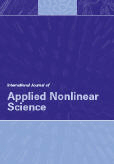
International Journal of Applied Nonlinear Science
Unraveling Complexity: The Intersection of Theory and ApplicationInternational Journal of Applied Nonlinear Science, published by INDERSCIENCE ENTERPRISES LTD, is a leading platform dedicated to the dissemination of innovative research in the field of nonlinear science. With an emphasis on applied methodologies, this journal focuses on the practical implementations of nonlinear theories across various disciplines, including engineering, physics, and applied mathematics. Contributions to the journal foster interdisciplinary dialogue, encouraging the exploration of complex systems and their behaviors. Although currently not an open-access publication, its accessibility through institutional subscriptions ensures that essential research reaches a wide audience. The journal seeks to provide a forum for the exchange of ideas and advancements that push the boundaries of conventional science, thereby appealing to researchers, professionals, and students alike who are eager to engage with cutting-edge developments in nonlinear science.
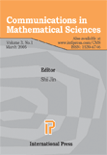
Communications in Mathematical Sciences
Illuminating the Path of Mathematical AdvancementCommunications in Mathematical Sciences is a prestigious journal published by INT PRESS BOSTON, INC, dedicated to advancing the field of mathematical sciences through the dissemination of high-quality research. Since its inception in 2003, the journal has established itself as a key platform for scholars in both applied and theoretical mathematics, evidenced by its impressive rankings, with a Q2 designation in Applied Mathematics and a Q1 status in Miscellaneous Mathematics categories as of 2023. Although not an open-access journal, it provides comprehensive access to groundbreaking studies that span a wide array of topics within mathematical sciences, making it invaluable for researchers, professionals, and students alike. The journal's strong performance metrics, including a Scopus rank that places it in the 64th and 38th percentiles for General and Applied Mathematics, respectively, highlight its influence and significance within the academic community. With an optimistic convergence towards future advancements by 2024, Communications in Mathematical Sciences continues to play a vital role in the growth and evolution of mathematical inquiry.
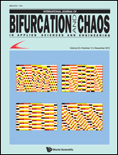
INTERNATIONAL JOURNAL OF BIFURCATION AND CHAOS
Exploring the Frontiers of Chaos and ComplexityINTERNATIONAL JOURNAL OF BIFURCATION AND CHAOS is a premier scholarly publication renowned for its focus on the intricate dynamics of bifurcation and chaotic systems across various scientific disciplines. Established in 1996 and published by World Scientific Publishing Co Pte Ltd, this journal plays a significant role in fostering interdisciplinary research within the realms of applied mathematics, engineering, and modeling & simulation, boasting impressive quartile rankings of Q1 in Multidisciplinary studies and Q2 across other key categories as of 2023. With an active convergence of cutting-edge research and comprehensive reviews, this journal engages with the academic community by providing a platform for novel findings and theoretical advancements. Researchers, professionals, and students alike will benefit from its rich content, reflecting the ever-evolving landscape of complexity science. Access to the journal is subscription-based, ensuring a curated selection of high-impact articles that adhere to the highest standards of academic excellence.
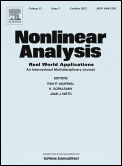
NONLINEAR ANALYSIS-REAL WORLD APPLICATIONS
Pioneering Nonlinear Analysis for Tomorrow's ChallengesNONLINEAR ANALYSIS-REAL WORLD APPLICATIONS, published by PERGAMON-ELSEVIER SCIENCE LTD, is a premier academic journal dedicated to advancing the field of nonlinear analysis through rigorous research and practical applications. With an impressive impact factor and categorized in the Q1 quartile across multiple disciplines including applied mathematics, computational mathematics, and engineering, this journal stands as a vital resource for researchers, professionals, and students. Its extensive scope encompasses significant contributions from the domains of economics, medicine, and various engineering fields, making it a leading platform for interdisciplinary exchange. The journal's commitment to showcasing innovative methodologies and solutions from 2000 to 2025 not only enhances its academic prestige but also fosters real-world impact, thus catering to a diverse scholarly audience eager to explore the complexities and potentials of nonlinear phenomena. Access options vary, ensuring a wide dissemination of knowledge to drive future discoveries in this dynamic area of study.